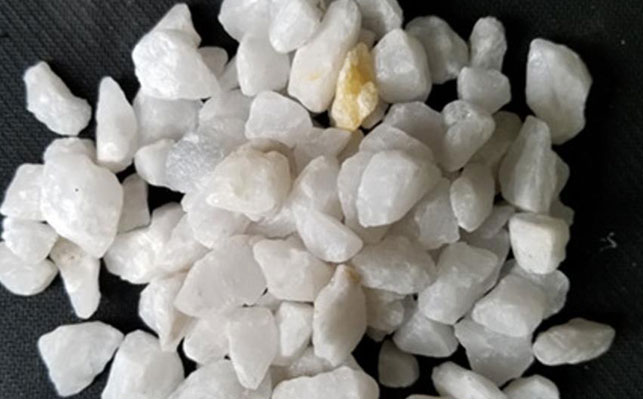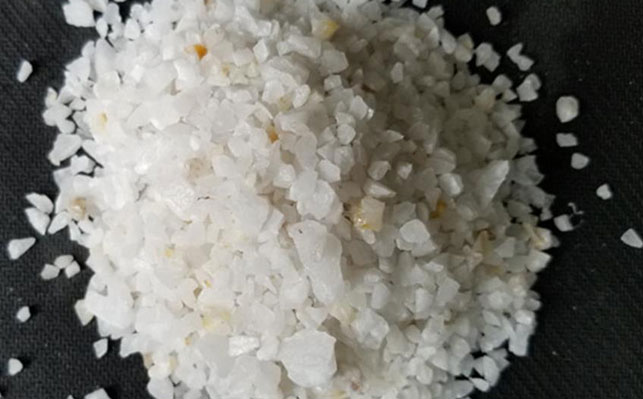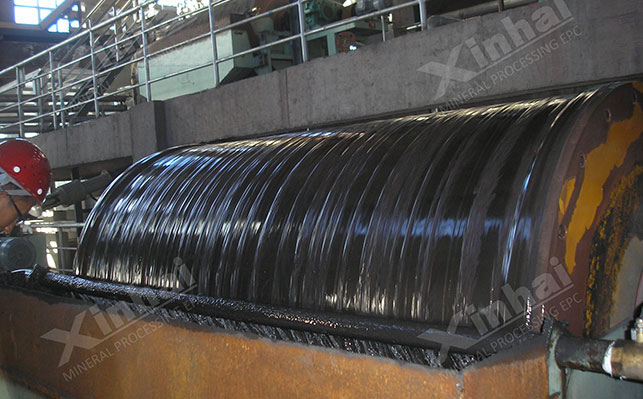
15311826613
Click to add WeChatQuartz sand (silicon dioxide) occupies an important position in the modern industrial system. It is an important industrial raw material for glass, electronics, ceramics and other industries. Its purity determines the quality and performance of the product. However, quartz sand minerals are often accompanied by a variety of impurity minerals, mainly iron, aluminum, manganese, clay minerals, etc., which need to be demanufactured and purified. Among them, manganese is a common impurity in quartz sand, often present in trace amounts, which has many effects on the quality of quartz sand. Then this article will discuss its influencing factors and why the demanganese effect of quartz sand is not good?
Impurities will directly reduce the physical and chemical properties of quartz sand. For example, iron impurities will reduce the electrical insulation performance of quartz sand and make it unsuitable for use in electronic fields such as semiconductors and photovoltaics. Clay minerals will increase the water absorption of quartz sand, affecting its molding performance in precision casting, resulting in rough casting surface and reduced dimensional accuracy. Manganese impurities will also interfere with its electrical properties. Therefore, it is necessary to remove impurities to restore the original physical and chemical properties of quartz sand and improve the quality of end products.

In different industries, there are different standard requirements for manganese content in quartz sand. Ordinary glass-grade quartz sand must have a Mn content of less than 50ppm to ensure the basic quality and performance of glass products. Electronic-grade quartz sand is used in the manufacture of precision electronic devices, so the requirements for manganese content are more stringent and need to be controlled below 5ppm to meet the production needs of high precision and high stability.
Encapsulated manganese: Part of manganese is embedded in the quartz lattice in the form of an encapsulated form. Manganese in this state is closely combined with the quartz crystal structure. If it is to be removed, it is often necessary to destroy the quartz crystal structure. Conventional physical and chemical methods are difficult to achieve effective separation.
Adsorbed manganese: Adsorbed manganese attached to the quartz surface in the form of Mn²⁺ is easily overlooked in the manganese removal process due to its fine particles and weak adsorption force, and it is difficult to completely remove it by simple cleaning or screening methods.
Compound minerals: Manganese often forms composite minerals with elements such as iron and aluminum, such as Mn-Fe oxides. The physical and chemical properties of these composite minerals are similar to those of quartz sand, and it is difficult to achieve efficient separation during the mineral processing process, which increases the difficulty of manganese removal.

Inadequate pickling process: The dissolution rate of hydrochloric acid (HCl) for manganese silicate minerals such as MnSiO₃ is low. It is difficult to effectively remove such manganese impurities using HCl alone, and hydrofluoric acid (HF) needs to be added for auxiliary dissolution. In addition, if Mn²⁺ is not oxidized to MnO₂, some manganese impurities cannot be effectively dissolved by acid. In actual operation, there is often a situation where no suitable oxidant (such as H₂O₂ or NaClO) is added.
Improper sorting method: The magnetic separation method is inefficient for weakly magnetic manganese minerals, such as rhodochrosite, and it is difficult to effectively separate them. At the same time, the reagent system used in the flotation process is not optimized for manganese impurities, resulting in the inability to effectively separate quartz sand and manganese minerals, reducing the efficiency of manganese removal.
In the manganese removal process, the control of key operating parameters is crucial. In terms of acid concentration, the ideal acid concentration should be HCl 5 - 10% + HF 1 - 3%. If the acid concentration is insufficient, the manganese impurities will not be fully dissolved; when the temperature is controlled at 70 - 90℃, the reaction rate between the acid and the manganese impurities is faster, while room temperature pickling will greatly reduce the reaction efficiency; the amount of oxidant must also be strictly controlled. The ideal amount of H₂O₂ is 3 - 5%. If no oxidant is added or the amount is insufficient, Mn²⁺ cannot be fully oxidized, affecting the manganese removal effect.
Due to the strong corrosiveness of hydrofluoric acid (HF), ordinary reactors are difficult to meet its use requirements. The lack of hydrofluoric acid-resistant reactors will limit the application of composite acid leaching processes. In addition, the solid-liquid separation equipment is not accurate enough to effectively intercept fine particles such as manganese colloids, resulting in residual manganese impurities and affecting the manganese removal effect.
The phased combined process can improve the efficiency of manganese removal. The raw ore can be physically pre-selected first, and some obvious impurities and coarse-grained manganese minerals can be removed by magnetic separation or gravity separation; then reduction roasting is carried out at a temperature of 650-750℃ to change the structure and properties of manganese minerals, which is convenient for subsequent treatment; then composite acid leaching is carried out, using a combination of HCl-HF-H₂O₂ acid to fully dissolve manganese impurities; finally, deep purification is carried out, using chelating resin or electrodialysis and other methods to further remove residual trace manganese impurities to ensure that the quartz sand meets high purity requirements.

Enhanced oxidation: Ozone (O₃) is used instead of H₂O₂ for oxidation. Ozone has stronger oxidizing properties and no residue after the reaction, which can more effectively oxidize Mn²⁺ to MnO₂. At the same time, by controlling the redox potential (ORP) to be greater than 600mV, the oxidation reaction is ensured to be fully carried out.
Improved acid leaching: Using the step-by-step acid leaching method, HCl is first used to remove carbonate impurities in quartz sand, creating better conditions for the subsequent HF dissolution of silicates; then HF is used to dissolve impurities such as manganese silicates. In addition, the introduction of ultrasonic assisted technology uses the cavitation effect and mechanical stirring of ultrasound to increase the reaction rate between acid and manganese impurities, which can increase the reaction rate by 30%.
Biological leaching: Manganese oxidizing bacteria are used to treat low-concentration manganese impurities. Microorganisms can oxidize and dissolve manganese through their own metabolic activities to achieve manganese removal. This method has the advantages of being environmentally friendly and low cost.
High-temperature chlorination: For manganese impurities in the lattice, Cl₂ is introduced at a temperature above 1000°C to react manganese with chlorine to generate volatile manganese compounds, thereby achieving manganese removal.
Membrane separation technology: Nanofiltration membranes are used to remove dissolved Mn²⁺. Nanofiltration membranes can selectively intercept ions of specific size and charge, effectively remove manganese impurities, and retain other useful components in quartz sand.
Select a reactor lined with polytetrafluoroethylene (PTFE), which has excellent hydrofluoric acid corrosion resistance and can meet the needs of the composite acid leaching process. Equipped with an ultrafiltration system, the system can intercept colloidal manganese particles smaller than 0.1μm, improve the accuracy of solid-liquid separation, and ensure the effective removal of manganese impurities in quartz sand.
The above are several major factors and improvement plans for the low efficiency of manganese removal from quartz sand. In actual production, mine owners should choose a mineral processing plant with corresponding qualifications for mining, sorting and purification. Xinhai has Class B design qualifications for metallurgical mining engineering and Class I qualifications for general contracting of mining engineering construction. It can purify quartz sand according to various industry requirements, and the purification rate can reach 99.99%, meeting various market needs. If you have any needs, please consult.